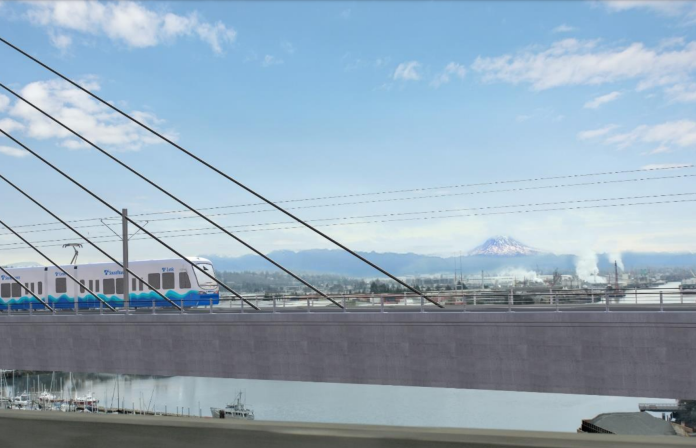
The freshly revealed 28% to 40% cost increase could delay light rail to West Seattle or force cost-cutting measures.
The cost to extend light rail to West Seattle is expected to cost $1.1 billion to $1.6 billion more than earlier estimates suggested, according to newly released information from Sound Transit. The updated cost ranges, provided within the Final Environmental Impact Statement (FEIS) for the West Seattle Link Extension, point toward tough decisions that will be set to come in front of the Sound Transit board in the coming months as they select a final alignment for the project.
Sound Transit had previously pegged West Seattle Link’s cost at just under $4 billion, but the new estimates for the preferred alignment selected by the board in 2022 represent a potential increase of 28% to 40%, significantly outpacing inflation. The FEIS notes the potential for these increased costs to disrupt Sound Transit’s overall delivery plan, which currently assumes an opening of West Seattle Link by late 2032.
“[B]ased on current cost estimates and revenue projections, the preferred alternatives and design options for the West Seattle Link Extension are anticipated to exceed the assumptions in Sound Transit’s realigned financial plan,” Sound Transit wrote in the FEIS.
The cost increases impact all segments on the four-station light rail project, which includes a new bridge crossing the Duwamish River alongside the West Seattle Bridge. That river crossing, pegged at $1.2 to $1.3 billion in Sound Transit’s draft EIS from 2022, is now expected to cost $1.9 to $2.15 billion. And a tunnel underneath 41st Avenue SW, the preferred option selected by the Sound Transit board to get to Alaska Junction, is now expected to cost $1.75 to $1.9 billion, up from $1.1 billion.
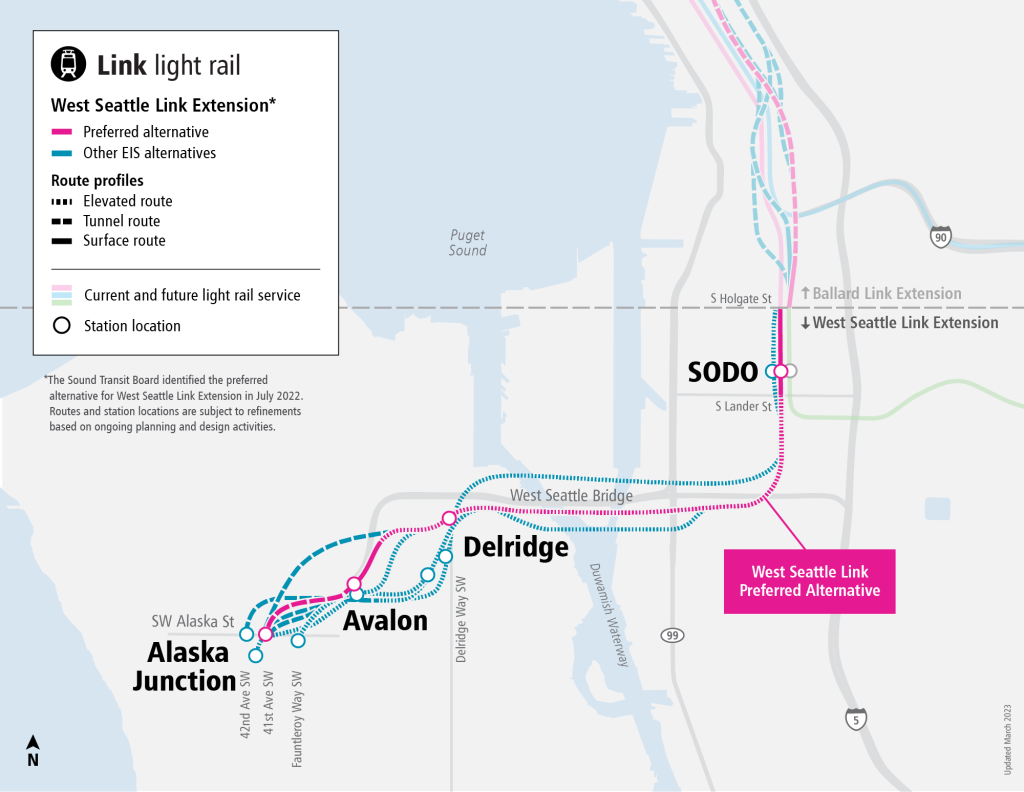
Cost overruns on “megaprojects” are not unique to Sound Transit. LA Metro’s first section of the Westside Subway, which includes three new stations, has experienced cost increases totaling over 20% since the project broke ground in 2014, adding $575 million to the project’s cost. Locally, the Washington State Department of Transportation had to scramble last year when bids for the final segment of the SR 520 bridge replacement project in Portage Bay came in at nearly 70% more than originally estimated, causing the legislature to scramble to find a path forward.
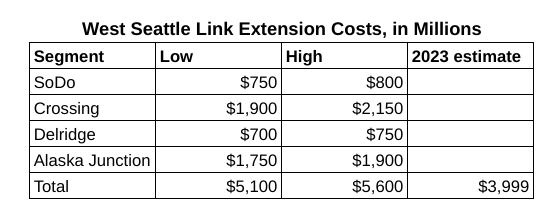
If Sound Transit isn’t able to get costs down, its typical recourse is delaying projects while it collects more revenue, a worrying prospect given the long timelines already inherent in Sound Transit 3 projects.
A 30% to 40% cost increase is alarming for West Seattle Link, but even more so for what it portends for the $11.2 billion dollar Ballard Link Extension project, originally paired with West Seattle but now undergoing environmental review on its own timeline. If costs jump by the same rate on Ballard Link, it would mean the budget ballooning by between $3 billion and $4.5 billion.
Sound Transit still has not published the second Draft EIS for Ballard Link, after the board added additional options for station placement in South Downtown, South Lake Union, and Uptown, which made the first Draft EIS insufficient. Those delays mean the agency does not expect to complete the Ballard Link FEIS until 2026.
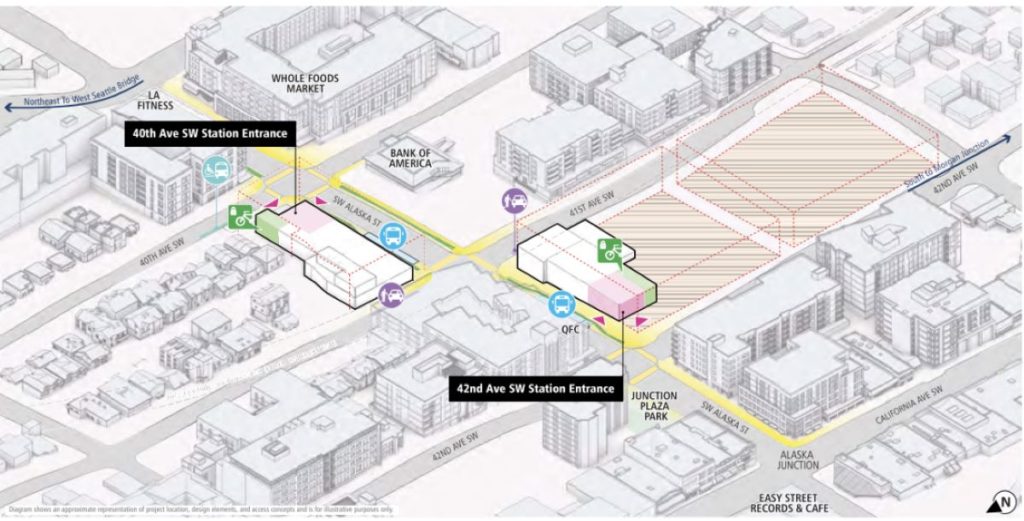
The largest opportunity to reduce costs for West Seattle among the options considered by the FEIS would be to reconsider the tunnel to Alaska Junction, with an elevated rail option over Fauntleroy Way SW potentially saving Sound Transit $600 to $850 million. Generally, transit agencies around the world have found underground rail lines cost significantly more to build than elevated ones, which led some transit experts to question Sound Transit’s earlier claims that there was little cost difference between the options. It turns out that rule of thumb was correct.
As previously broached in a cost-cutting study, the agency could also eliminate the planned station at Avalon Way, but with a tunnel still planned that would only save an expected $250 to $500 million. While ridership estimates between the options don’t vary much, the elevated Fauntleroy Way option is actually expected to draw the most, at 8,000 daily riders compared to 7,500 for a tunnel without an Avalon Station.
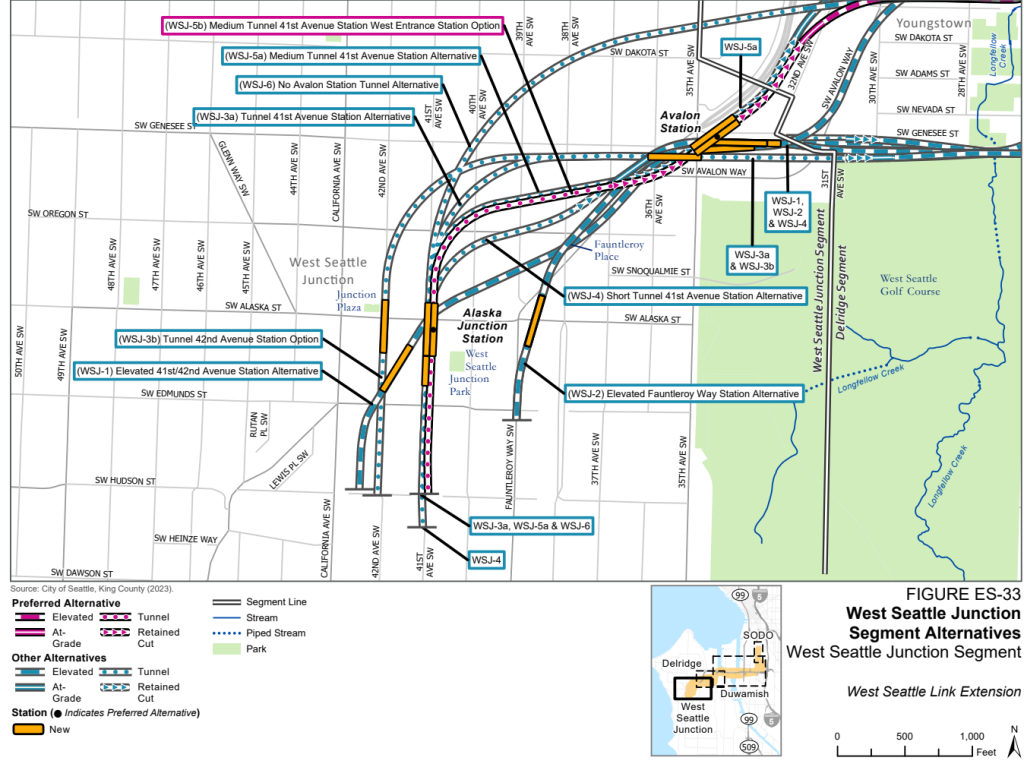
At the time it was selected, the tunnel option was said to be affordable within the agency’s financial model, after it initially looked like the only way Seattle would be able to see West Seattle light rail underground would be to pay for it using city funding. The elevated options, which included planned acquisition of numerous properties — including some brand new apartment buildings — came with high cost estimates, given the constraints that Sound Transit says it faces in trying to site stations in Fauntleroy Way’s right-of-way.
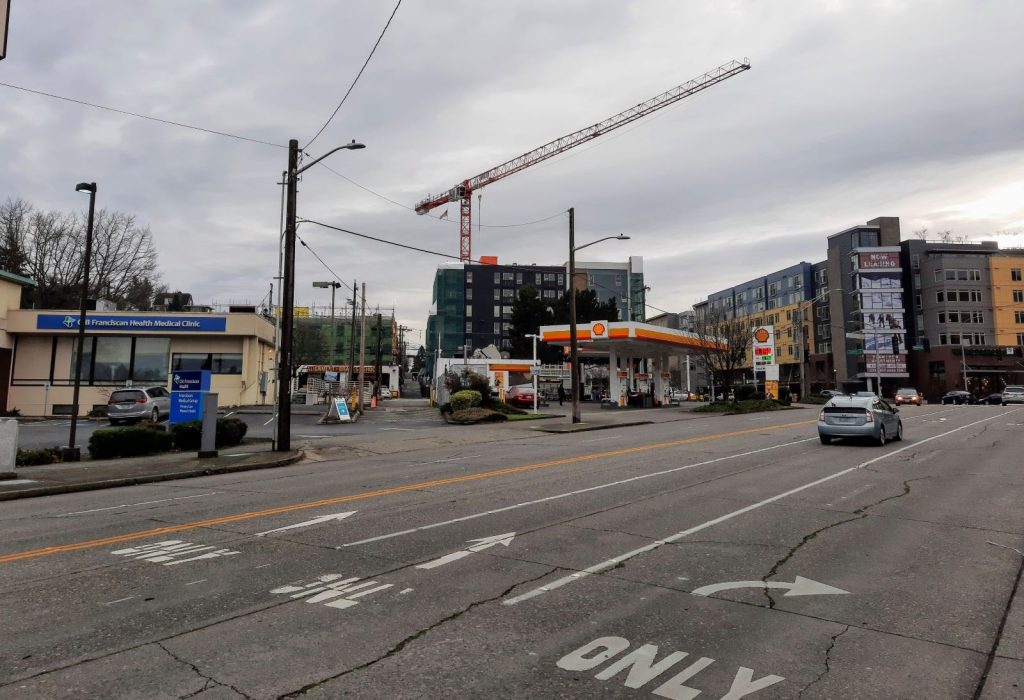
The West Seattle Link project has already come under sharp criticism for planned displacement of businesses near Delridge Station, and the tunnel looked to be one way to avoid additional impacts like those. The idea of a building an elevated guideway over the street through the heart of West Seattle’s major transportation artery and business district seems likely to bring heated opposition as well.
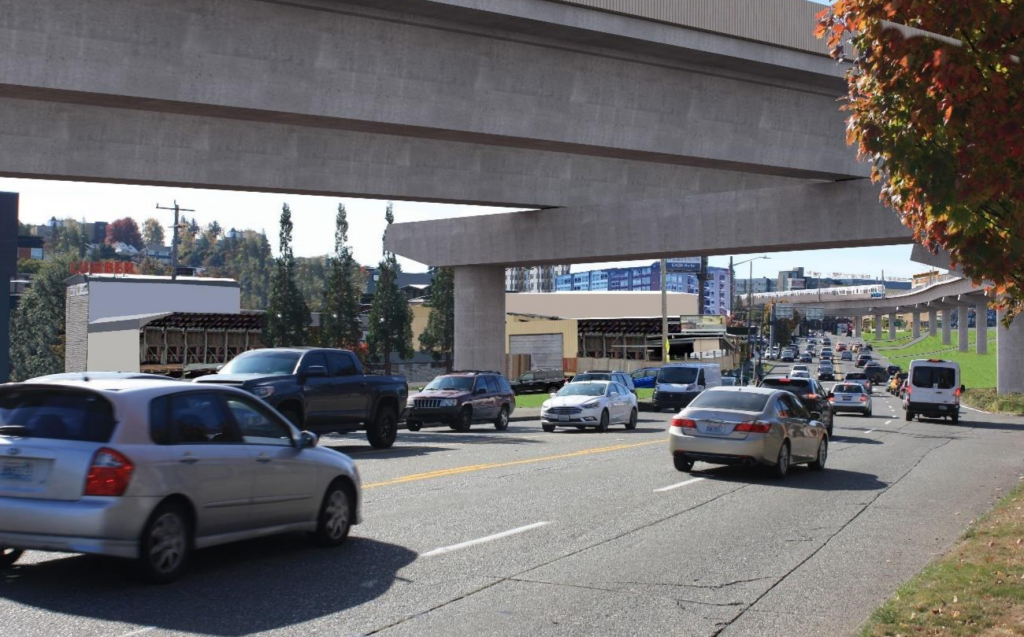
While the board can steer away from its preferred option now, the cost of delay is also a factor, and switching out the tunnel option for the elevated one would also incur costs, with inflation eating away at the project’s budget while Sound Transit conducts additional environmental review. But compared to Ballard Link, where a 10-month delay was expected to cost $500 million, the cost to delay on West Seattle should be expected to be more modest given the smaller scale of the project.
The Sound Transit board hasn’t yet been briefed on these potential impacts of cost increases for West Seattle Link, something that is expected to happen later this month. But this week the board’s system expansion committee did get a briefing from its Technical Advisory Group (TAG), the expert panel created to get a handle on the significant challenges that Sound Transit is facing delivering these megaprojects. The TAG praised the board for sticking to its preferred alternative in South Lake Union, but pointed to more bumps in the road coming up soon.
“The costs are going up nationally, guys, you just have to keep a tight ring and keep trying to find some solutions for whatever problems are going to come your way,” Grace Crunican, former BART General Manager and co-chair of the TAG, told board members. “And time is not your friend, so get on them and suck it up and make those tough decisions.”
Correction: The earlier draft stated the high-end cost estimate went up $1.5 billion. In fact, it went up $1.6 billion in the Final EIS. Sound Transit has subsequently revealed “bottom-up” cost estimates that put the increase at $2.7 billion to $3.1 billion more than the Draft EIS estimate. The new total cost range for West Seattle Link is between $6.7 billion and $7.1 billion.
Ryan Packer has been writing for The Urbanist since 2015, and currently reports full-time as Contributing Editor. Their beats are transportation, land use, public space, traffic safety, and obscure community meetings. Packer has also reported for other regional outlets including BikePortland, Seattle Met, and PubliCola. They live in the Capitol Hill neighborhood of Seattle.

